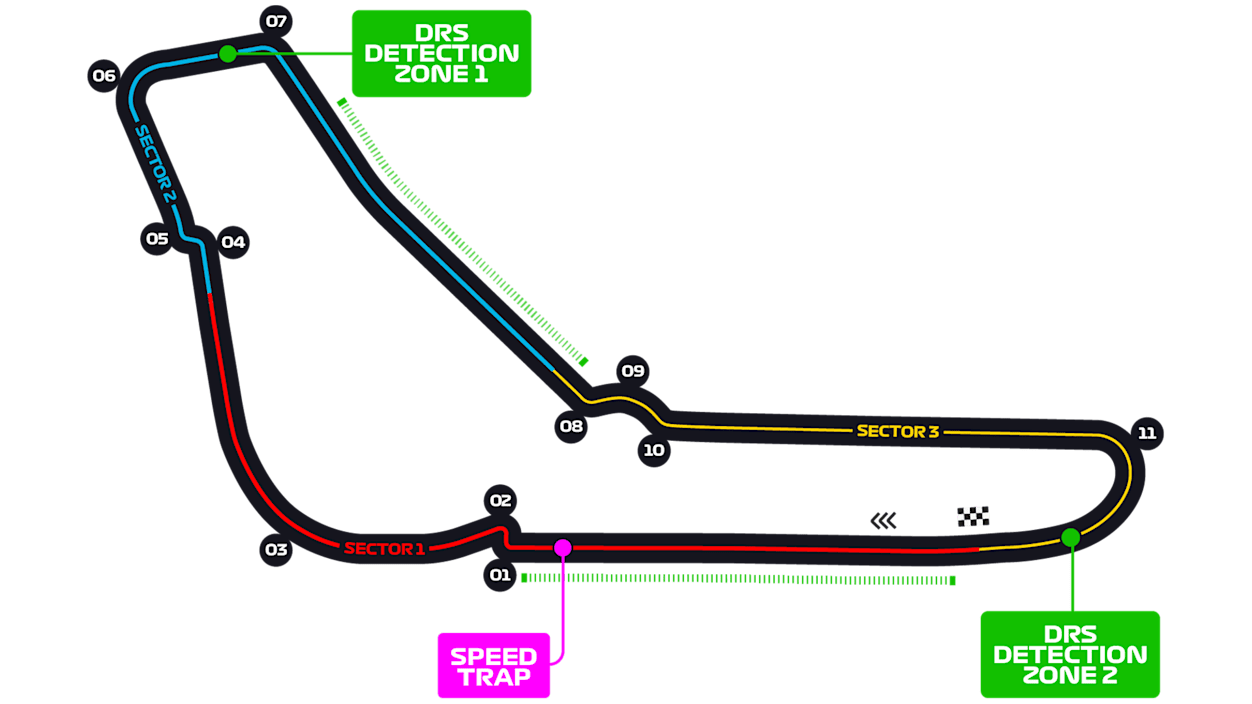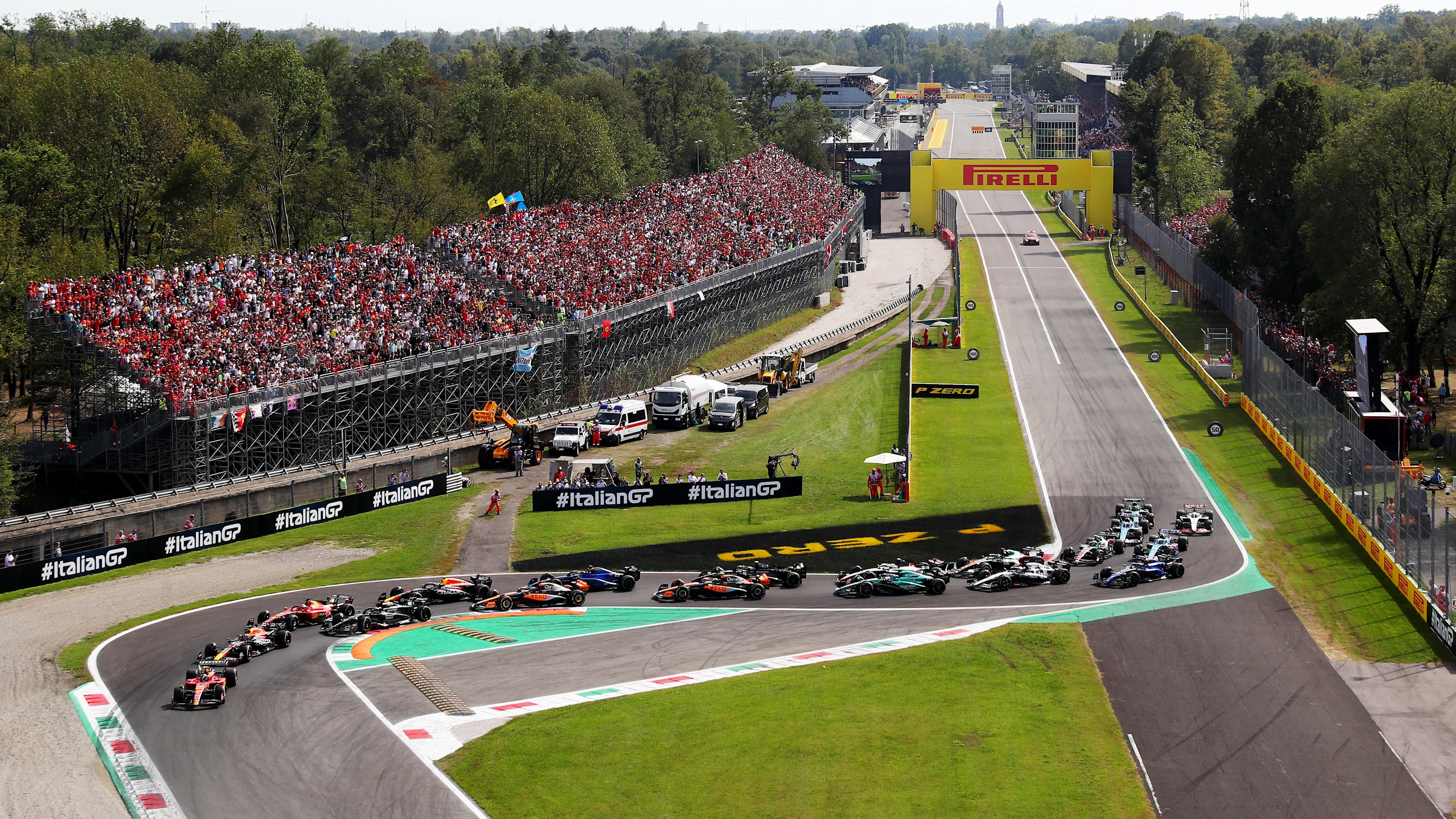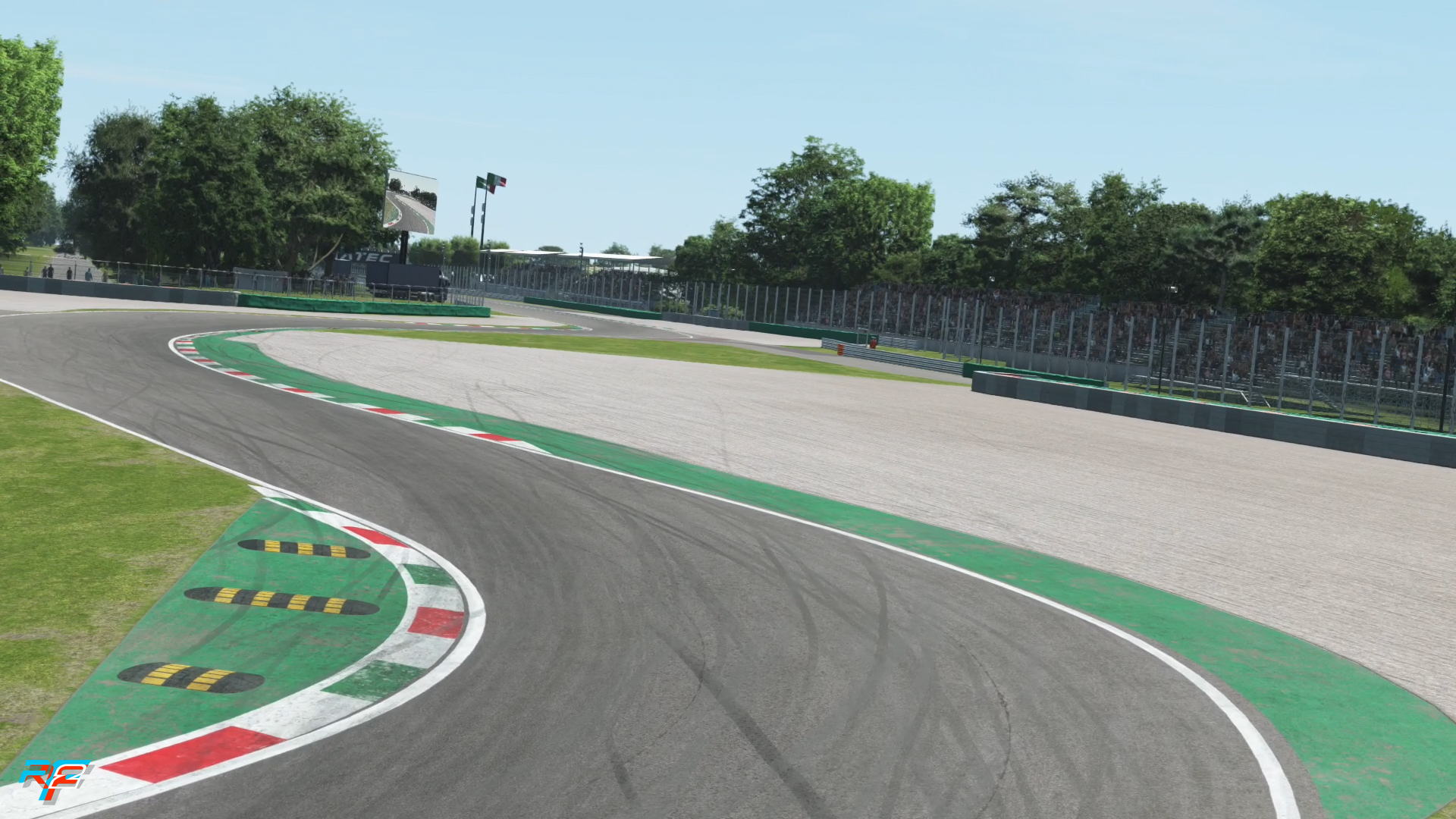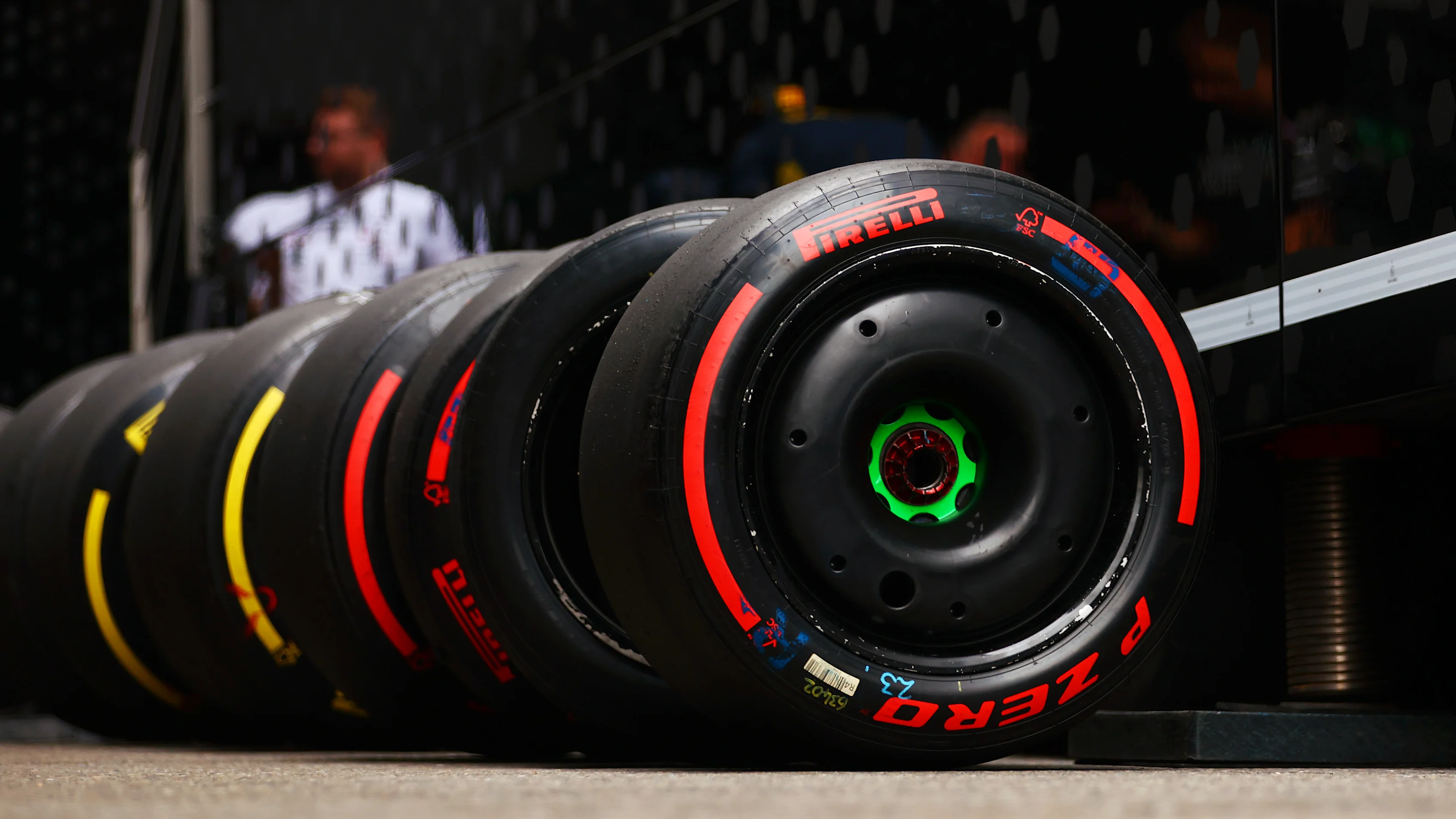
2025 Italian Grand Prix: all you need to know
The 2025 Italian Grand Prix at Monza is one of the highlights of the Formula 1 calendar. As Round 16 of the season , it marks the last European race of 2025 and a pilgrimage for F1 fans. Monza's Autodromo Nazionale, built in 1922, has been part of Formula 1 since the inaugural 1950 championship (hosting every Italian GP except 1980) . Known as the "Temple of Speed," this historic Monza circuit is the fastest track in F1, with cars averaging over 260 km/h (162 mph) per lap . In fact, drivers spend roughly 80% of the lap at full throttle, hitting speeds above 350 km/h on Monza's 1.1 km main straight . These extreme velocities, coupled with passionate Tifosi crowds cheering on Ferrari at their home race, give Monza a legendary status in motorsport.

Key Corners at Monza
Layout of Monza, featuring long straights and a few critical corners (chicanes and curves) that define its Monza F1 challenge.
Monza's 5.793 km track may have fewer corners than most circuits, but each is crucial for a fast lap. The circuit comprises three chicanes and several high-speed bends that test a car's low-downforce setup and a driver's nerve . Here are the iconic turns that matter most on this Monza F1 layout:
-
Variante del Rettifilo (Turn 1-2): The first chicane after the pit straight is the most famous braking zone in Monza. Cars thunder down the straight at over 340 km/h then slam the brakes to about 70 km/h . This tight right-left chicane is notorious for first-lap chaos and late-braking overtakes. As Jolyon Palmer notes, "getting your car to stop nicely for Turn 1 -- that's the key" to a good lap .
-
Lesmo 1 & 2 (Turns 6 and 7): These two medium-speed right-handers in the woods are deceptively challenging. They have a slight camber, allowing drivers to carry more speed than it appears . A good exit from Lesmo 2 is vital as it leads to a long acceleration zone. Mistakes here hurt momentum on the run toward Ascari.
-
Variante Ascari (Turns 8-9-10): A fast chicane complex named after Alberto Ascari, it's a sequence of left-right-left bends taken at high speed. The first part (Turn 8) is crucial -- carry too much speed in and you risk running over the kerbs or into the gravel . It's bumpy, and if you get Turn 8 right, you can blast through Turns 9 and 10 flat out . A clean run through Ascari rewards you with a strong slingshot onto the back straight.
-
Curva Parabolica (Curva Alboreto, Turn 11): The legendary final corner is a long, sweeping right-hander leading back to the main straight. Parabolica demands commitment -- drivers brake late, then progressively get back on throttle to carry maximum speed through the exit. "Attack it, run right around the outside to carry speed, and get on the throttle as soon as possible onto the main straight," advises Palmer . Though the old gravel trap at exit has been replaced with tarmac run-off, the challenge remains high to nail this turn and launch into a flying lap.

Overtaking Opportunities
Monza is famed for slipstream battles and high-speed overtakes. Despite its long straights, overtaking can be trickier than expected because teams run minimal aerodynamic drag, reducing the effectiveness of DRS (Drag Reduction System) slipstreams . Nonetheless, the F1 overtaking zones at Monza are well-defined:
-
Turn 1 -- Rettifilo Chicane: The prime overtaking spot on the circuit is the Turn 1 chicane at the end of the start/finish straight . With a DRS zone along the main straight, drivers often arrive side-by-side into this heavy braking zone. We often see daring passes here (and occasional collisions) as cars slow from ~350 km/h to about 70 km/h . In 2024, this action-packed braking zone contributed to 71 total overtakes during the race .
-
Turn 8 -- Ascari Chicane: Another key passing spot is into Ascari. The second DRS zone runs from the Lesmo 2 exit down the straight toward Ascari . A car with a good exit from Lesmo can use the slipstream and DRS to draw alongside into the Ascari chicane. Though the approach is slightly curved, overtakes here are possible with late braking, making it an exciting high-speed duel area.

Beyond these, opportunistic passes can occur into the Variante della Roggia (the second chicane at Turns 4-5) if a driver gets a run out of Curva Grande. Overtaking into Parabolica is rare, but drivers will often set up moves there to gain a tow down the main straight. Given the reduced downforce setups at Monza, maintaining momentum is key -- a failed pass attempt can cost significant time. Overall, while Monza has only two DRS zones (pit straight and the straight to Ascari) , slipstreaming plays a huge role. Drivers often engage in tactical drafting battles, especially during qualifying. Expect plenty of action into the braking zones where F1 cars must shed staggering speed in an instant.
Tyre Selection and Strategy
Tyre strategy is always a focal point in Monza due to the high speeds and relatively low tire degradation. For the Italian Grand Prix 2025, Pirelli has brought the softest available compounds: C3 (Hard), C4 (Medium), and C5 (Soft) . This is the same selection as last year, when Monza's asphalt was freshly resurfaced . Now a year older, the track surface is more matured (bedded in), meaning teams expect slightly less graining and more consistent grip than in 2024 .
Monza is typically a one-stop race if conditions allow. The hard and medium tyres are likely to be the preferred race compounds due to their durability . Teams will aim to minimize pit stops because a stop at Monza costs around 24 seconds in the pit lane -- one of the longest time losses of any circuit. Running longer stints and preserving tyres is advantageous, as overtaking on track isn't straightforward with the lower drag levels. "Time lost in the pit lane for a tyre change is among the longest of the season, so teams will try and run as long a stint as possible... with the aim of only changing tyres once," Pirelli notes in their preview . A one-stop (likely Medium to Hard, or vice versa) is anticipated to be the fastest approach for most.

However, teams must stay flexible with their F1 tyre strategy. If a late Safety Car appears, a "free" pit stop for fresh rubber could sway the race -- Monza has about a 50% Safety Car probability in recent years . Moreover, if track temperatures soar, increased thermal degradation might force a two-stop strategy for some cars . Pirelli warns that early September in Lombardy can still feel like the height of summer, and extreme heat could make a two-stopper more competitive by accelerating tyre wear . In summary, expect most teams to favor a one-stop unless high degradation or race incidents dictate otherwise. Managing the Pirelli tyres -- especially keeping the rear tyres cool through the fast Lesmos and Parabolica -- will be critical. Smart F1 tyre strategy and timing of pit stops could make the difference between victory and defeat at Monza.
Weather Outlook and Its Impact
Weather can always add unpredictability to a race, but the Formula 1 weather forecast for Monza in 2025 looks set fair. The Italian GP weekend is expected to be dry and warm, with sunny skies and ambient temperatures around 27--28°C each day . Currently, there is no rain on the forecast for Friday through Sunday , so teams should face stable conditions. (This is in stark contrast to Zandvoort's changeable weather last week, or the famous rain-soaked Monza 2008 race.) Humidity may be relatively high on race day, but only a minimal 5% chance of showers is predicted . In fact, the last time rain truly shook up the Italian Grand Prix was 2008, when a young Sebastian Vettel scored a shock win in a Toro Rosso amid a downpour . Barring an unexpected twist, weather likely won't play the joker this time.

That said, a hot Monza has its own implications. Warm temperatures will heat the track surface, affecting tyre performance and car cooling. Teams will keep a close eye on brake and engine temperatures, as Monza's long straights mean less air time for brakes to cool. Hot tarmac can also increase tyre degradation -- as noted, if it "still feels like the height of summer," tyre wear could spike and push teams toward two-stop strategies . Wind is usually mild in the Monza park, but a tailwind into Turn 1 or crosswind in Ascari could catch drivers out in high-speed braking zones. Overall, with a sunny forecast, fans at the track can expect classic Italian late-summer weather -- perfect for watching F1 cars blast through the Parco di Monza. The focus for teams will be optimizing setup for heat and ensuring reliability under sustained full-throttle stress. Don't forget sun protection if you're in the grandstands -- and enjoy what looks set to be a beautiful race weekend!
Historical Records and Statistics
Monza's rich history in Formula 1 has produced countless records and memorable moments. Here are some key historical stats and facts about the Italian Grand Prix at Monza:
-
Fastest Lap Record: The official lap record is 1:21.046, set by Rubens Barrichello for Ferrari in 2004 . Monza's layout yields the highest average speeds in F1 -- Lando Norris even took pole in 2024 with an average speed of ~263 km/h , flirting with the fastest laps ever seen in F1.
-
Most Wins: Michael Schumacher and Lewis Hamilton share the record for most Italian GP victories, with 5 wins apiece at Monza . Hamilton also holds the record for most pole positions at this circuit with 7 poles in his career .
-
Monza and the Championship: Monza has been on the F1 calendar every year since 1950 (except 1980 when it moved to Imola) . It's the only venue, along with Silverstone, to appear in every F1 season. Autodromo di Monza's inaugural F1 race was in 1950, but the Italian GP itself dates back to the 1920s. This longevity underscores Monza's status as one of the sport's classic venues.
-
Memorable Moments: The Italian Grand Prix often delivers drama and iconic F1 moments. In 1971, Monza produced the closest finish in F1 history with five cars finishing within 0.6 seconds! In 2008, a young Sebastian Vettel stunned the paddock by taking his maiden win at a soaked Monza for Toro Rosso -- the last rain-affected Italian GP to date . That victory made Vettel (then 21) the youngest race winner at the time and gave the underdog Italian team a fairy-tale triumph. Similarly, Pierre Gasly's unbelievable win in 2020 for AlphaTauri (the rebranded Toro Rosso) also came at Monza, underlining this track's habit of springing surprises. In fact, the Red Bull junior team's only two F1 wins have both occurred at Monza (Vettel 2008 and Gasly 2020) -- truly hallowed ground for underdogs.

- Tifosi and Ferrari: No discussion of Monza is complete without mentioning Ferrari. The Scuderia is Italy's pride, and Monza is their home turf. Ferrari has won the Italian GP 19 times, more than any other constructor. Recent history saw Charles Leclerc send the Tifosi into delirium with a triumphant win for Ferrari in 2019 and again in 2024 . The sea of red in the grandstands and the podium invasion by fans after the race are traditions that showcase the passion of the Italian crowd. Monza has also been the scene of heartbreak -- from Ferrari's last Italian driver winner (Ludovico Scarfiotti in 1966) to moments of tragedy in the past -- but through it all, it remains the beating heart of Italian motorsport.
With such a legacy of speed and spectacle, Monza's record books reinforce why it's revered in F1 lore. The combination of flat-out straights, slipstream battles, and the roar of the crowd underlines every Italian Grand Prix as something truly special.
Conclusion
The 2025 Italian Grand Prix promises to deliver classic Monza excitement with a modern championship twist. Fans should watch for the key storylines: the blistering top speeds and late-braking duels into Turn 1, the strategic tire games with likely one-stop plans, and how teams handle the warm weather conditions. Keep an eye on those crucial overtaking zones -- a brave move into the Rettifilo chicane or Ascari could decide the race. Tyre management will be pivotal, as a well-timed pit stop (or perhaps staying out when others pit) might leapfrog drivers ahead given Monza's long pit delta . Also pay attention to the slipstream tactics in qualifying, where getting a tow can be worth a few tenths on such a power-sensitive track.
In terms of the 2025 championship narrative, Monza could be a turning point. McLaren arrives leading both championships , with Oscar Piastri now 34 points ahead of Lando Norris after the dramatic Dutch GP . Norris, fresh off a costly DNF, will be determined to claw back ground in the title fight at a venue where overtaking on track is challenging. A strong result is critical for him to keep his championship hopes alive. Meanwhile, Ferrari will be desperate to rebound on home soil -- after a double DNF in Zandvoort, the Scuderia is eager for redemption in front of their Tifosi . Charles Leclerc's win here last year showed Ferrari can harness the home energy; this year, they'll aim to spoil McLaren's party. Don't count out Red Bull and Mercedes either -- Monza's low-downforce nature could play to their strengths, and Max Verstappen (a past Monza winner) will always be a threat. Every point is vital with only a handful of races left after Monza, so the pressure is on all the contenders.
In summary, the Formula 1 circus at Monza offers a unique blend of heritage and flat-out racing. From the deafening cheers of the crowd to the sheer speed of the cars, the Italian Grand Prix 2025 is set to be an unforgettable weekend. Whether it's for the love of Ferrari, the thrill of wheel-to-wheel battles, or the implications for the championship, this race has something for every F1 fan. So buckle up for Monza -- the Temple of Speed is ready to write another chapter in Formula 1 history . For F1 fans and title protagonists alike, the 2025 Italian GP is all about momentum -- and there's no better place than Monza to carry that speed.
